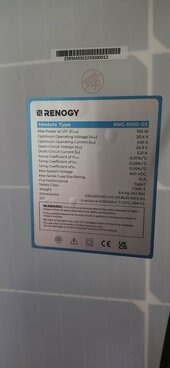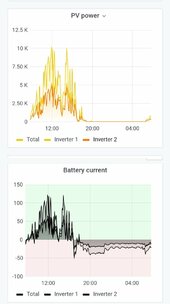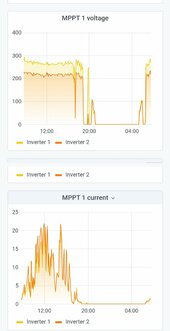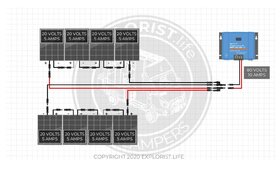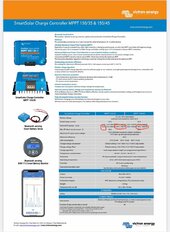Hello everyone. New to the scene but very excited to really work this thing out and finally be able to have a way to cool some food. Let me start off by telling you a bit about my situation. I purchased a moble home under forclosure a year and 1 month ago. It was bad. 18 pipe breaks and 1000sqft of mold and fungus under the floor and a lot of mold and rot in the walls over the past 50 years. The wiring was done by a blind goat and the layout was nothing short of a 99% fire hazard. So bad i had to rebuild and shingle the roof and demolish everything underneath and build new. Ya load bearing walls and all. Massive project to do at 39 by myself, but im 65% of the way to having a solid mold free space.
The thing that is killing me is my 1 year old and 4 year old plus my partner can't stay in the city with me no more. I spent $35k in hotel fees to keep them close but unfortunately I ran out of money. So 16 long and agonizing days ago I had to send them away to my moms 5000km away. So I have been sleeping in my truck and going back to the good old days of 17 year old me. Broke and alone. I have managed to get some funding together. Ah I wont lie just using credit and racking up debt. I was able to purchased some stuff over the years and recently. Ill write a list below and take some photos. My goal is to hopefully soon be able to run my mini fridge non stop. I know I can run it off my bank for 3 days but I have no way to charge it. Lucky I have a bunch of stuff. I believe im 80% of the way to completing my own off-grid system.
This forum pops up all the time and everyone seem to be on point when it comes to helping the less informed. I am that less informed. Now dont get me wrong I am a master of common sence and dont argue when I am told I dont know a damn thing. That is my que to listen so I want to ask everyone to help me with what I need to do. So I dont have to hit the grocery store everyday and waste a ton of food, and fuel.
List of items I have :
4x Odyssey Extreme AGM 2250CCA 100ah battries w/ 80% safe depletion @ 400 cycles (batteries are connected in parallel with 600v #6 welding wire, solid copper 3/8 connectors and solid copper 3/8 washers) (this bank ran my fridge for 3-1/2 days before dying) add 250watts for my laptop and lights) so about 2- 1/4 solid days of continuous power.
Victron 150/45 MPPT solar controller w/BT
8x Renogy 20.4v/24.3v 100w solar pannels (specs in photo) (#14/2.5mm - wire)
Dewalt 1000w / 2000pw 12v inverter (works to power fridge, lights, and laptop - tested and works flawless)
#12 Pv 1500v wire @ 100ft w/15 male and female water proof connectors
1x 175amp fuse (may need smaller port since its 00 gauge)
I have also purchased 1240ah 48v worth of 320ah 3.2v 8000cycle batteries 68 in total. I am going to build a new system once I get a bit more set up and some money coming in so i can spend a small fortune on a few BMS systems.
I need to know with what I got the schematics of what I need to do to get this system up and running. I need reliable power and soon because the end is near if I dont.
Thanks for all the future help.
The thing that is killing me is my 1 year old and 4 year old plus my partner can't stay in the city with me no more. I spent $35k in hotel fees to keep them close but unfortunately I ran out of money. So 16 long and agonizing days ago I had to send them away to my moms 5000km away. So I have been sleeping in my truck and going back to the good old days of 17 year old me. Broke and alone. I have managed to get some funding together. Ah I wont lie just using credit and racking up debt. I was able to purchased some stuff over the years and recently. Ill write a list below and take some photos. My goal is to hopefully soon be able to run my mini fridge non stop. I know I can run it off my bank for 3 days but I have no way to charge it. Lucky I have a bunch of stuff. I believe im 80% of the way to completing my own off-grid system.
This forum pops up all the time and everyone seem to be on point when it comes to helping the less informed. I am that less informed. Now dont get me wrong I am a master of common sence and dont argue when I am told I dont know a damn thing. That is my que to listen so I want to ask everyone to help me with what I need to do. So I dont have to hit the grocery store everyday and waste a ton of food, and fuel.
List of items I have :
4x Odyssey Extreme AGM 2250CCA 100ah battries w/ 80% safe depletion @ 400 cycles (batteries are connected in parallel with 600v #6 welding wire, solid copper 3/8 connectors and solid copper 3/8 washers) (this bank ran my fridge for 3-1/2 days before dying) add 250watts for my laptop and lights) so about 2- 1/4 solid days of continuous power.
Victron 150/45 MPPT solar controller w/BT
8x Renogy 20.4v/24.3v 100w solar pannels (specs in photo) (#14/2.5mm - wire)
Dewalt 1000w / 2000pw 12v inverter (works to power fridge, lights, and laptop - tested and works flawless)
#12 Pv 1500v wire @ 100ft w/15 male and female water proof connectors
1x 175amp fuse (may need smaller port since its 00 gauge)
I have also purchased 1240ah 48v worth of 320ah 3.2v 8000cycle batteries 68 in total. I am going to build a new system once I get a bit more set up and some money coming in so i can spend a small fortune on a few BMS systems.
I need to know with what I got the schematics of what I need to do to get this system up and running. I need reliable power and soon because the end is near if I dont.
Thanks for all the future help.
Attachments
Last edited:



